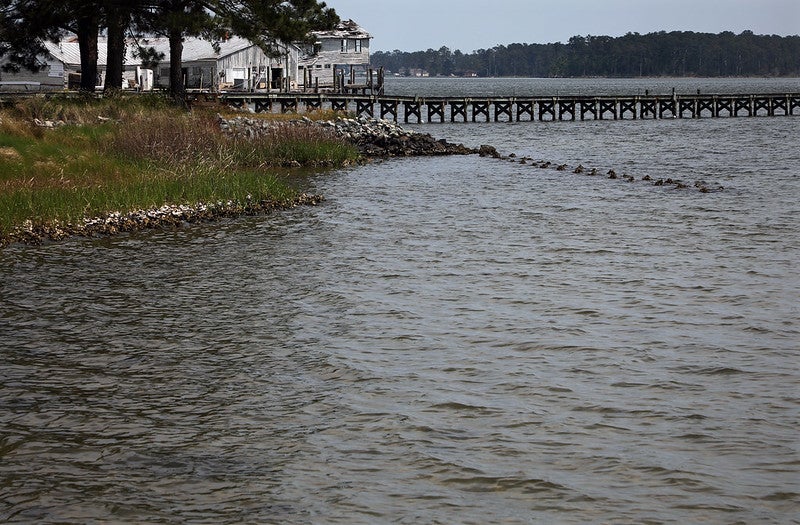
Four ways North Carolina can build resilience year round
Earlier this week, North Carolina Gov. Roy Cooper signed a proclamation recognizing the imperative to think anew about how the state lives with climate change. The governor emphasized the importance of building resilience as North Carolina communities continue to recover from an onslaught of devastating hurricanes and other extreme weather events.
Flooding has been the biggest problem this year, from headline-grabbing events like Hurricane Dorian, to intense, fast-forming thunderstorms like those we experienced in June, when 3 inches of rain fell per hour. In fact, June was the eighth wettest month on record since 1895.
September, however, was among the driest months in a decade, contributing to what experts call a “flash drought.” For farmers, flash droughts are problematic because they can cause crop loss, especially when crops have shallow roots after being planted during a wet month. While farmers were able to harvest some crops this fall, other harvests are at risk from the dry weather.
This pattern of extreme rain combined with flash drought is straining already beleaguered farmers and residents.
My EDF colleagues and I have championed principles of resilience to strengthen North Carolina’s communities, infrastructure and ecosystems since Hurricane Matthew hit in the fall of 2016. The Governor’s proclamation is a welcome reminder that building resilience is vital not just this week, but should be part of the state’s mindset every week of the year to confront this “new normal” of extreme weather.
Yesterday, Gov. Cooper declared Oct. 6-12 as Resiliency Week for North Carolina. As our state continues to recover from three major hurricanes, we must rebuild stronger and smarter so we can prepare for future storms. https://t.co/aNa1kOx5d3 pic.twitter.com/DNDTFa8ylc
— Governor Josh Stein (@NC_Governor) October 8, 2019
Here are four ways we can maintain momentum in building climate resilience.
1. Advance forward-looking solutions.
Farmers and residents statewide are demanding solutions to challenges posed by extreme weather. New challenges require new solutions. We cannot use 20th century solutions to address 21st century problems.
Instead, we need to design, develop and implement new approaches to meet the needs of farmers, residents and business owners, while also sustaining the environment that makes North Carolina so special. In short, we need to advance solutions that make our communities, industries and environment more resilient to everything from too much or too little rain, to extreme heat and cold.
2. Invest in nature to build resilience.
The proclamation highlights the importance of natural strategies, such as restored floodplains, streams and wetlands, to help North Carolina thrive even as precipitation patterns shift and storms become more intense. Nature-based solutions are important to minimize future flood risk. These approaches can be placed strategically across the landscape to provide the greatest benefit, while still allowing for private ownership and land use, such as farming. They also help recharge groundwater to offset the impacts of droughts, improve water quality and provide wildlife habitat.
Importantly, these solutions can save taxpayer dollars. The proclamation notes that every $1 spent on hazard mitigation derives $6 in benefits. Investments in natural strategies such as stream, wetland and floodplain restoration are exactly the type of wise investments needed to help North Carolina’s residents and businesses be more resilient in the face of extreme weather.
3. Let science lead planning and decision-making.
To advance these solutions and ensure they have the greatest impact at the lowest cost, we need to let science guide decision-making and planning.
Models like North Carolina Emergency Management’s Flood Inundation and Mapping and Alert Network can identify how rainfall threatens communities and infrastructure. Using these risk data, scientists, engineers and planners can then identify where upstream natural strategies can most effectively retain water and limit flooding.
4. Engage the private sector.
The private sector has an important role to play in delivering nature-based solutions. By leveraging both the ecological expertise and competitive nature of North Carolina’s private sector environmental restoration industry, the state can empower the private sector to bolster resilience and community preparedness for flooding and drought in an efficient and effective manner.
One place to look is the existing contracting mechanism and network of private sector restoration providers utilized by the Division of Mitigation Services (DMS).
In the late 1990’s, programs located within DMS were created to leverage private sector expertise to deliver cost-effective environmental mitigation projects to offset impacts to streams and wetlands associated with development projects and road building. With some relatively minor adjustments to state laws, this same approach could be used to begin getting cost-effective, nature-based flood mitigation projects on the ground in an efficient and expedited manner.
These types of approaches will allow the state to implement a resilience mindset that will take the sentiments expressed this week and turn them into lasting solutions that will benefit the people, economy and wildlife of North Carolina year round.
Here are four ways North Carolina can make its communities, industries and wildlife more resilient every week of the year: Share on X











